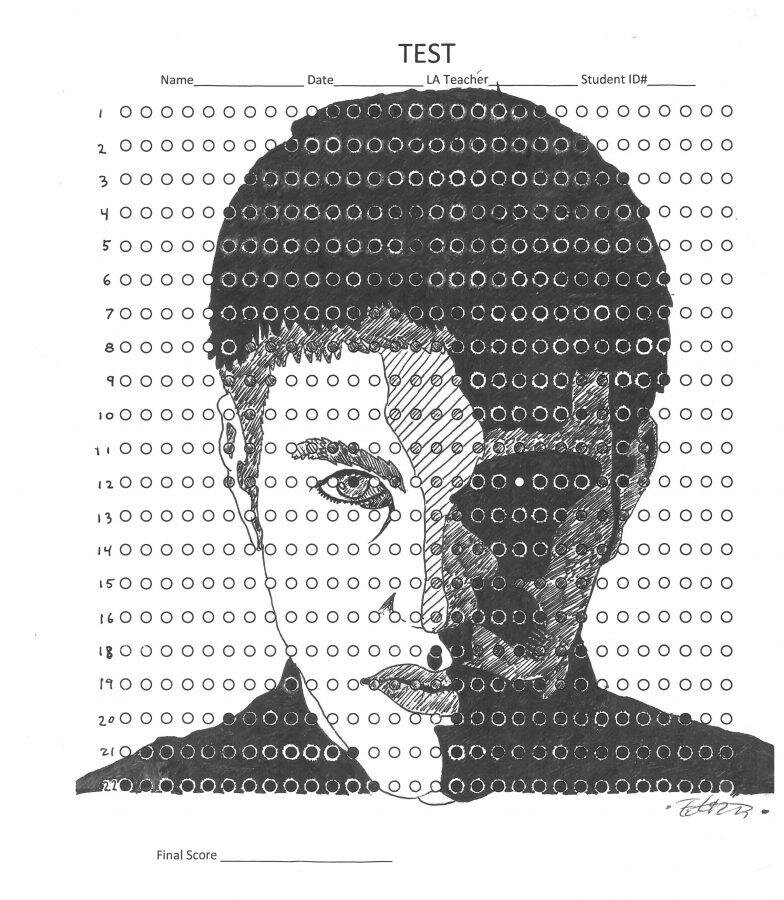Claire Moriarty, Opinions Editor
Originally published November 22, 2016
Fletcher Anderson
After sitting in a freezing gymnasium for five hours answering a slew of shallow and superficial questions, I left feeling brain-dead.
It would be brutally redundant to state that American students are given a massive amount of standardized tests throughout their academic careers. Since the No Child Left Behind (NCLB) act passed in 2002, annual testing has been mandatory nationwide. The PSAT (Preliminary Scholastic Aptitude Test) was administered to sophomores and juniors on October 19, hence my cold fingers and spinning head.
Economically, using multiple choice scantron tests to assess our scholastic aptitude makes a ton of sense. Test publishers including NCS Pearson and CTB/McGraw-Hill are intrinsic contributors to an industry that is estimated to make millions. Not to mention human graders cost money.
But since 2002, U.S. students have consistently lagged behind Asian and European countries in reading, math, and science, according to the Progress in International Reading Literacy Study and the Trends in International Mathematics and Science Study.
A typical American student will take 112 standardized tests between kindergarten and 12th grade, while in other countries–countries that outperform the U.S. on international exams–students take tests of this magnitude only three times in their school careers.
Take Finland, for example. Ranked sixth in the world in math and science, Finnish students take no annual standardized exams. Instead, teachers create independent tests, which are used to assess students at the end of each semester. The Ministry of Education sporadically measures national progress by testing sample groups of students selected from a scattered range of schools.
Why is the United States trying to standardize learning? And why must these exams be of such regularity and with such emphasis placed on them?
Just to be clear: I am not arguing that school is too hard, and that they should make things easier. I can think critically as well as the next person. I can whip out an essay in under an hour. I can argue a point and defend a position.
Did I get to prove any of this on the PSAT? Nope.
According to education researcher Gerald Bracey (1940 – 2009), standardized tests fail to measure much of what makes education meaningful. These qualities include creativity, motivation, endurance, and reliability, all of which are important character traits.
“What [standardized testing] does, in my opinion,” Biology and Oceanography teacher Noam Gundle said, “is it classifies people and diminishes them as unique human beings.”
Standardized testing was first used in the United States by the Eugenics movement, which identifies as a science designed to prevent people with inferior genes (i.e., low IQ scores) from having children. The tests were created to prove white superiority.
The scholastic achievement gap between black and white students in Seattle is the fifth largest in the country. This is one list we should aspire to be at the bottom of.
“If it’s a tool that we’re using to measure student achievement, but it’s perpetuating the achievement gaps that we’re trying to address, then that’s a problem,” Gundle stated.
Everyone has the capability to learn, but everyone learns differently. We don’t all have the same cultural background, and the tests assume that we do. Or rather, they assume that everyone has only one mode of thinking–the same mode.
If the tests don’t accurately reflect what we’re capable of doing, my day in the freezing gym was a day wasted.
Life isn’t standardized. We shouldn’t be either.

























